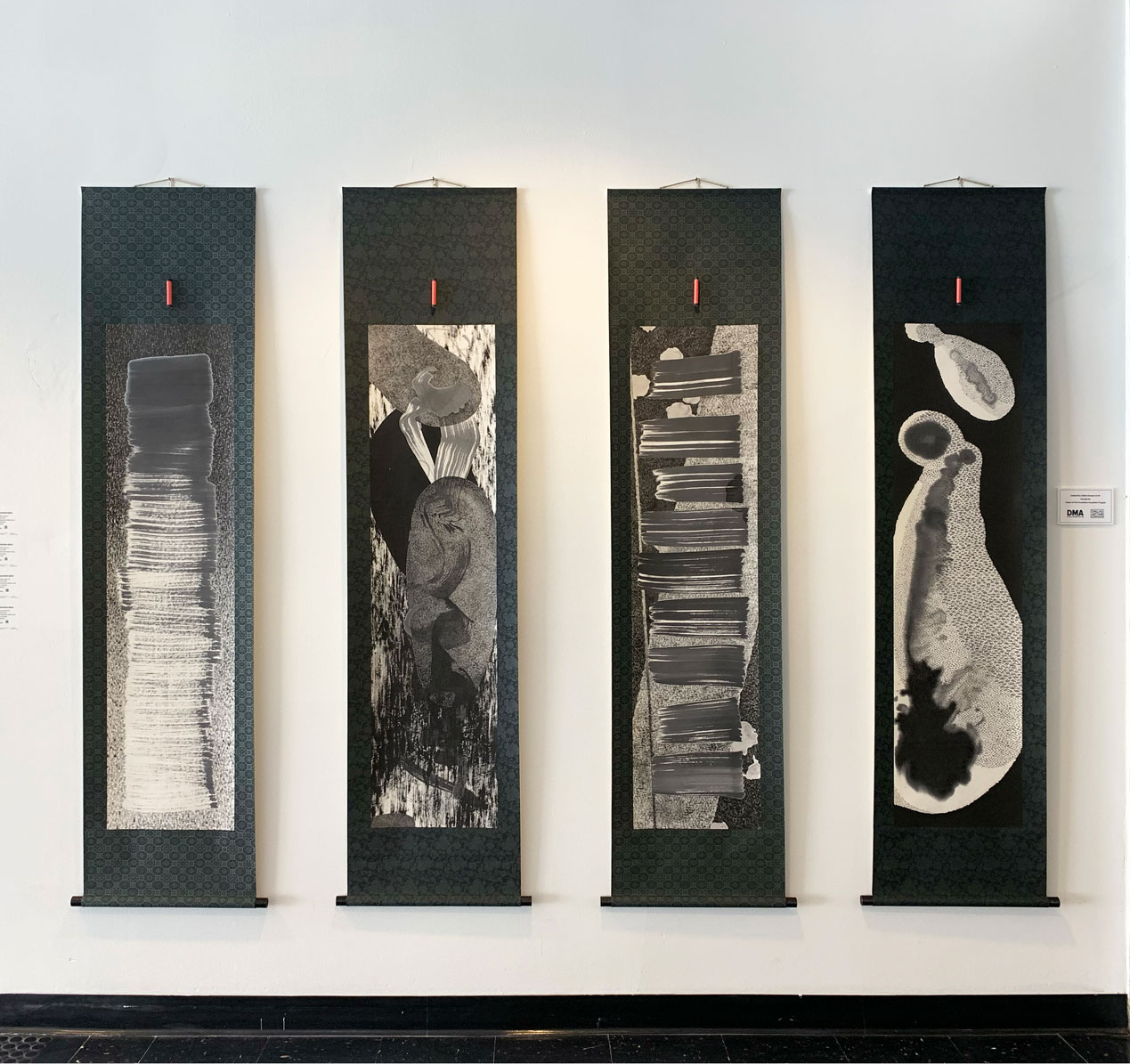Dallas Museum of Art Acquires Four Works by Professor Sugawara-Beda
Four artworks by Professor Nishiki Sugawara-Beda were acquired by the Dallas Museum of Art at the Dallas Art Fair and will be added to the museum’s permanent collection.

Art professor Nishiki Sugawara-Beda will have their work added to the permanent collection at the Dallas Museum of Art (DMA). The artworks, titled KuroKuroShiro – The Four Seasons, were acquired by the museum at the Dallas Art Fair earlier this month and were hand selected by the DMA’s Hoffman Family Senior Curator of Contemporary Art Dr. Anna Katherine Brodbeck and Lupe Murchison Curator of Contemporary Art Dr. Vivian Li. The selections made by Dr. Brodbeck and Dr. Li were funded by the Dallas Art Fair Foundation Acquisition Program, an annual gift from the Dallas Art Fair Foundation that places works from the fair into the DMA’s collection.
“I am very honored and grateful to be a part of the permanent collection at such an institution like the DMA,” says Sugawara-Beda. “There are many great artists and artworks in this world, and I am very lucky to be included among some of them at the DMA.”
Sugawara-Beda’s KuroKuroShiro — The Four Seasons incorporates a variety of materials and techniques into the pieces. Through the combination of rich fabrics, abstracted painted landscapes, and even hand-written fortunes, each of the four pieces represents a season of the year: spring, summer, fall and winter.
She worked with Japanese merchants in Nara, Japan to select fabrics suitable to pair with her abstracted landscape paintings and while layering the meanings of these patterns with her landscapes, she began to see the four seasons emerge. Her spring and summer landscapes paired perfectly with a peony and arabesque pattern and the fall and winter landscapes with a Shokkou pattern. To add another personal touch to the pieces, she wrote out four positive fortunes on red fortune paper and, after shuffling them, rolled the fortunes up into scrolls and affixed one to each season’s panel.
“While I don’t know which fortune belongs to which season, they are all lucky, offering hopefulness to the future,” she says.

Sugawara-Beda knew that she did not want glass separating the viewer from the piece, so she researched alternative methods for mounting before settling on a fitting format. The four pieces are displayed in a Kakejiku, or hanging scroll, format. This format, which has a long history in East Asian art since its conception over 1500 years ago in China, is a traditional way of mounting works on paper and allows the work to be rolled up and made portable.
Between this ancient formatting technique, her selected fabrics from the current-day Japanese market, and the handwritten fortunes attached to each piece, KuroKuroShiro — The Four Seasons “is an amalgam of the past, the present and the future.”
Sugawara-Beda also has artwork in selected collections at the Dennos Museum Center (Traverse City, MI), Morris Graves Museum of Art (Eureka, CA) and the Tusen Takk Foundation, (Leland, MI). You can learn more about the newest acquisitions by DMA here.